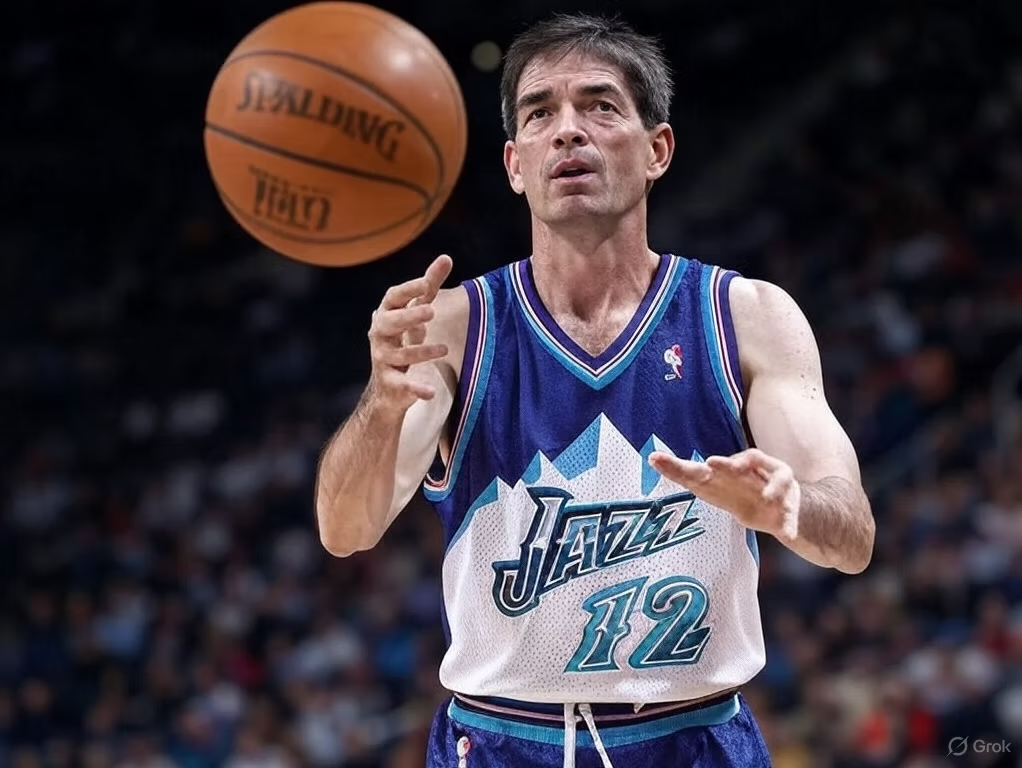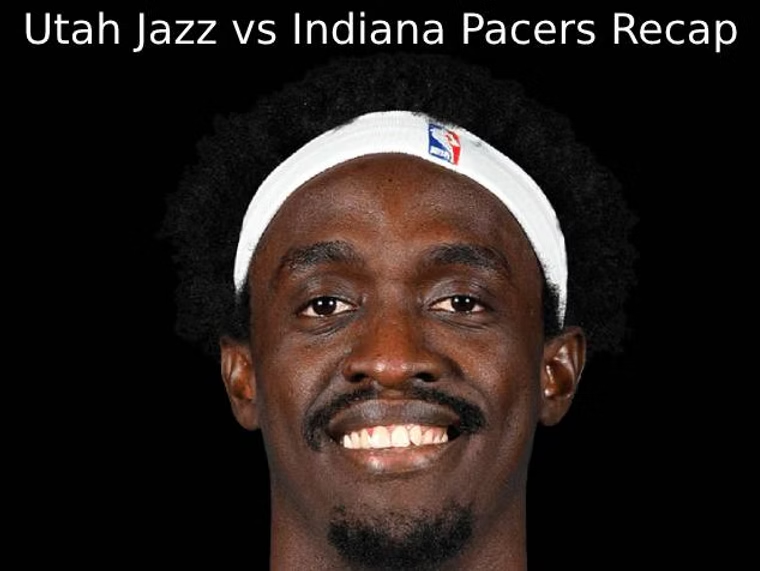One of the important metrics when considering how well a team passes the ball is assists to field goals made. To calculate the Utah Jazz’s assists as a percentage of made field goals (often referred to as “assisted field goal percentage” or AST/FGM) over the past 35 seasons, we need two key statistics for each season: total assists (AST) and total field goals made (FGM). This metric shows how often a made basket was the result of an assist, reflecting the team’s playmaking and ball-sharing tendencies. The formula is:
AST/FGM Percentage=(AssistsField Goals Made)×100
{AST/FGM Percentage} = {Assists} / {Field Goals Made} X 100
I’ll provide this data for the Utah Jazz from the 1989-90 season through the 2023-24 season, covering exactly 35 seasons. The current 2024-25 season is obviously ongoing, so I’ll exclude it due to incomplete data. The statistics are sourced from Basketball-Reference.com. Note that these are regular-season totals unless otherwise specified.
Below is the breakdown by season for both the Jazz and the NBA as a league:
|
Season |
Jazz Assists (AST) |
Jazz Field Goals Made (FGM) |
Jazz AST/FGM % |
NBA League AVG AST/FGM % |
|
1989-90 |
2,239 |
3,593 |
62.3% |
60.0% |
|
1990-91 |
2,114 |
3,441 |
61.4% |
59.7% |
|
1991-92 |
2,108 |
3,520 |
59.9% |
59.3% |
|
1992-93 |
2,087 |
3,463 |
60.3% |
60.7% |
|
1993-94 |
2,162 |
3,448 |
62.7% |
62.1% |
|
1994-95 |
2,197 |
3,482 |
63.1% |
61.6% |
|
1995-96 |
2,106 |
3,321 |
63.4% |
61.4% |
|
1996-97 |
2,173 |
3,369 |
64.5% |
61.0% |
|
1997-98 |
2,141 |
3,308 |
64.7% |
61.3% |
|
1998-99* |
1,296 |
1,754 |
73.9% |
60.5% |
|
1999-00 |
2,008 |
3,167 |
63.4% |
60.6% |
|
2000-01 |
2,026 |
3,149 |
64.3% |
61.1% |
|
2001-02 |
1,976 |
3,113 |
63.5% |
60.5% |
|
2002-03 |
2,021 |
3,105 |
65.1% |
60.2% |
|
2003-04 |
1,838 |
2,936 |
62.6% |
60.9% |
|
2004-05 |
1,834 |
2,959 |
62.0% |
59.3% |
|
2005-06 |
1,737 |
2,892 |
60.1% |
57.5% |
|
2006-07 |
2,120 |
3,252 |
65.2% |
58.4% |
|
2007-08 |
2,293 |
3,505 |
65.4% |
58.4% |
|
2008-09 |
2,098 |
3,375 |
62.2% |
56.6% |
|
2009-10 |
2,193 |
3,482 |
63.0% |
56.2% |
|
2010-11 |
1,963 |
3,277 |
59.9% |
57.8% |
|
2011-12** |
1,444 |
2,362 |
61.1% |
57.5% |
|
2012-13 |
1,879 |
3,098 |
60.7% |
59.6% |
|
2013-14 |
1,721 |
2,962 |
58.1% |
58.4% |
|
2014-15 |
1,642 |
2,936 |
55.9% |
58.7% |
|
2015-16 |
1,558 |
2,981 |
52.3% |
58.4% |
|
2016-17 |
1,707 |
3,058 |
55.8% |
58.0% |
|
2017-18 |
1,829 |
3,159 |
57.9% |
58.6% |
|
2018-19 |
2,162 |
3,298 |
65.6% |
59.9% |
|
2019-20 |
1,620 |
2,928 |
55.3% |
59.7% |
|
2020-21 |
1,722 |
3,037 |
56.7% |
60.2% |
|
2021-22 |
1,829 |
3,181 |
57.5% |
60.6% |
|
2022-23 |
2,135 |
3,494 |
61.1% |
60.2% |
|
2023-24 |
2,228 |
3,418 |
65.2% |
63.3% |
Notes:
-
1998-99 was a lockout-shortened season (50 games instead of 82), which explains the higher percentage due to fewer total field goals.
-
*2011-12 was also shortened (66 games) due to a lockout.
Observations and Trends:
-
Peak Team Play (1990s-2000s): The Jazz consistently posted high AST/FGM percentages during the John Stockton and Karl Malone era (1989-90 to 2002-03), often exceeding 60% and peaking at 73.9% (obviously skewed result) in the shortened 1998-99 season. Stockton, one of the NBA’s all-time assist leaders, drove this trend with his exceptional playmaking.
-
Post-Stockton Decline (2003-04 to 2015-16): After Stockton’s retirement in 2003, the percentage dipped, averaging around 60% in the mid-2000s and dropping further in the early 2010s. The low point was 52.3% in 2015-16, reflecting a shift toward more isolation scoring and less ball movement.
-
Modern Era Variability (2016-17 to 2023-24): The Quin Snyder era (2014-2022) saw fluctuations, with a notable uptick to 65.6% in 2018-19, driven by players like Ricky Rubio and Donovan Mitchell in a motion offense. Recent seasons under Will Hardy (2022-present) show a return to higher percentages (e.g., 65.2% in 2023-24), suggesting a renewed emphasis on team play.
-
League Context: Historically, league-wide AST/FGM averages hover between 55-65%, with modern offenses (post-2010s) often trending lower due to increased three-point shooting and iso-heavy play. The Jazz’s highs in the 60-70% range stand out as exceptional.
This data highlights how roster changes, coaching philosophies, and NBA trends have shaped the Jazz’s assist reliance over the years.






